When a new range of CPUs is released, we don’t really really talk about the utilities/tools associated with it but maybe we should. With the release of the AMDs Ryzen 3000XT series of processors also comes some welcome upgrades to its utility software. Namely, the AMD StoreMI and the AMD Ryzen Master.
Starting off with AMD StoreMI, it was AMD’s answer to Intel Optane when it came to storage acceleration. It was made in collaboration with Enmotus, an enterprise storage management company to bring their ‘FuzeDrive’ as StoreMI to Ryzen. FuzeDrive was designed to be a ‘tiered’ storage acceleration system.
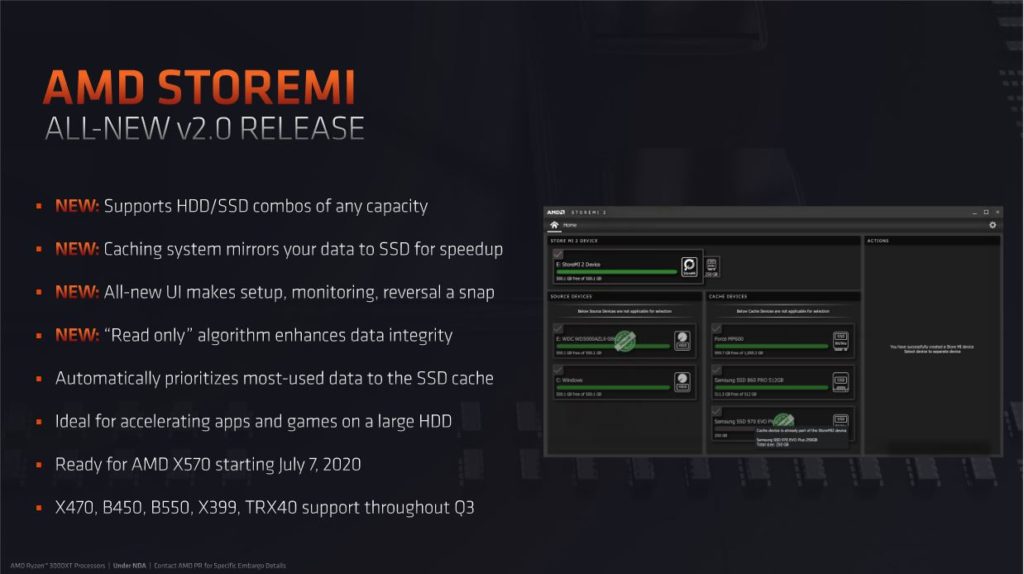
Although the general purpose of both Intel’s Optane and AMD’s StoreMI is the same i.e, storage acceleration but their approach to achieving it wasn’t. Firstly Intel required additional specialized hardware which also added to the cost whereas AMD’s solution worked with any pair of HDD and SSD. But it was capped to 2TB of HDD and 256GB of SSD.
This tiered storage basically works by creating a virtual drive with 2 physical locations (one HDD and one SSD). The data that is used regularly or is critical for fast operation is moved to the faster drive. This is determined by the machine learning algorithm and the faster drive serves as the higher ‘tier’.
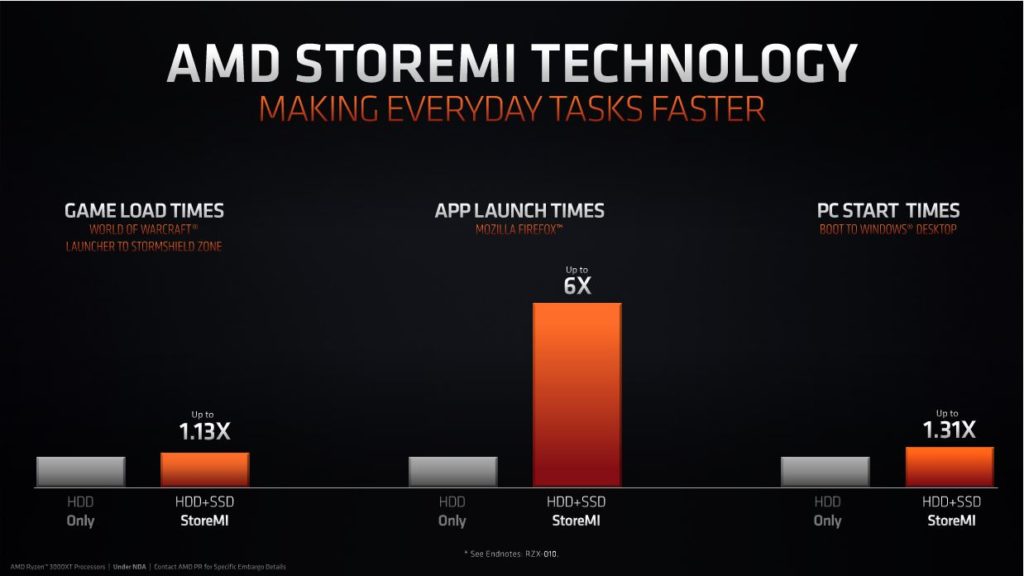
StoreMI has been out in the market for about 2 years and AMD has decided to give a much-needed facelift. Especially since its UI was considered clunky and not user friendly. But add to that the ‘tiered’ system is more prone to data loss while writing.
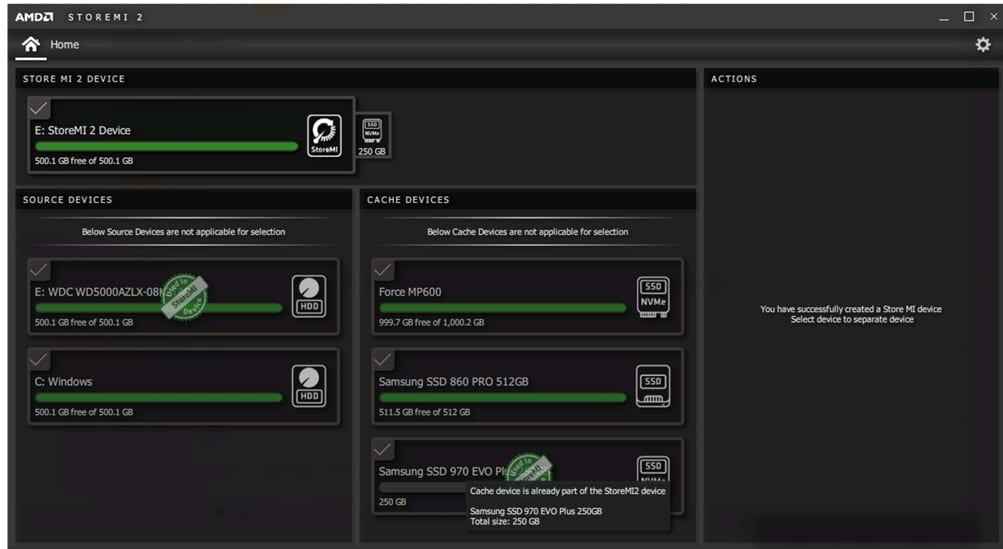
A new algorithm, ‘caching’ is being implemented in the StoreMI 2.0 bringing it closer to Intel’s approach of handling storage acceleration. This basically shadow-copies the more frequently used data to accelerate it. This eliminates data loss tendency but also eliminates the write speed advantage present in the version 1.xx.
All this is in addition to the UI overhaul which has been the main detractor for its mass adaptability. It is more streamlined and shares the Ryzen Master aesthetic.
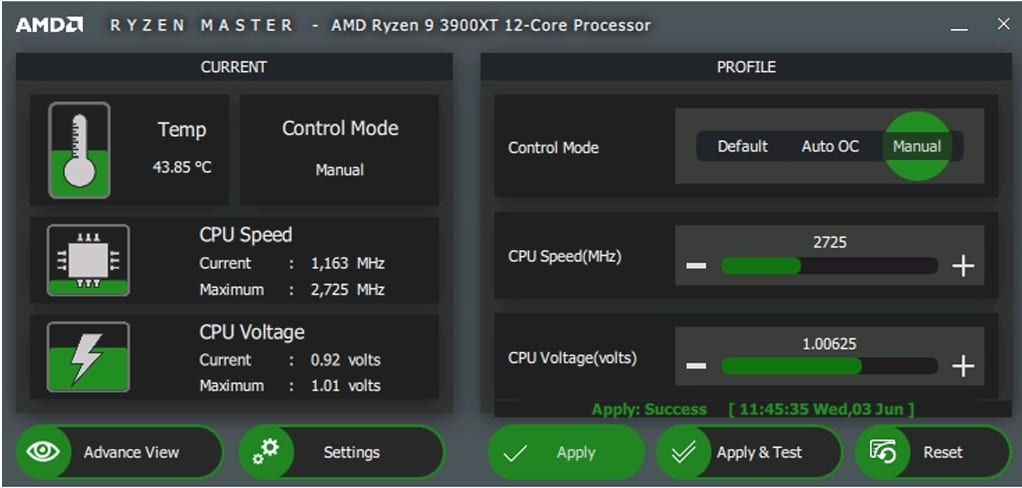
Now coming to AMD Ryzen Master(Basic view), this is more of a UI change than fundamental alterations like the storeMI 2.0. It has a more sleek design which indicates current and maximum voltages and frequencies. It also includes a simple toggle for AutoOC and Manual OC. And the appropriate frequency and voltage sliders for the Manual overclock operations.
AMD StoreMI 2.0 will rollout for X570 motherboards and 3rd gen Ryzen chips starting July 7th, while it will see a gradual release on X470, B450, B550, TRX40 and X399 during Q3 2020. Whereas you can get the Ryzen Master Basic view right now for any of the supported chipsets.


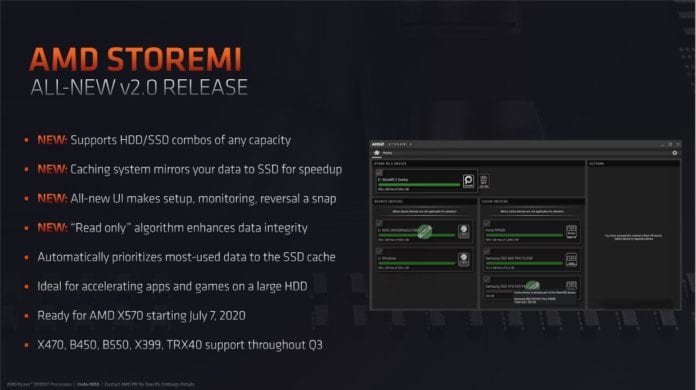
Are you able to specify what kind of files to cache? I world want it to ignore large video files but cache images for example